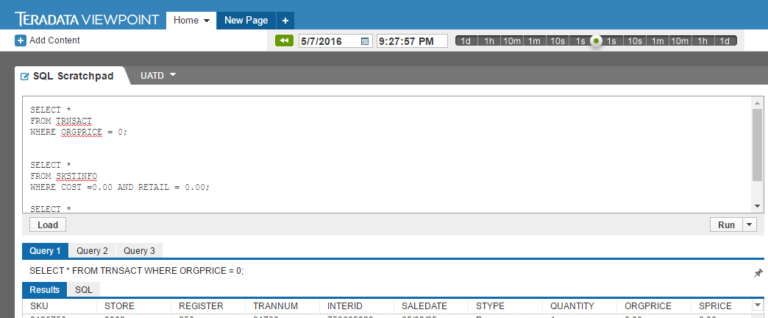OVERVIEW
My research work deals with Ghana, a country from the Gapminder dataset and there are 5 main
variables I have been working with so I will be looking at the sample,
procedure and measures for these 5 variables. The variables are:
i. Incomeperperson (Income Per Person)
ii. literacyrate (Literacy Rate)
iii. lifeexpectancy (Life Expectancy)
iv. inflation (Inflation)
v. exports (Exports)
SAMPLE
I will be analysing the sample based on these 4 parameters
a) Describe the study population (who or what was studied).
b) Report the level of analysis studied (individual, group, or aggregate).
c) Report the number of observations in the data set.
d) Describe your data analytic sample (the sample you are
using for your analyses).
The sample is taken from the population of Ghana. The specific year range the data was collected will be based on the specific data variable under consideration.
For literacy rate of Ghana, sample was drawn from the population of Ghana for all people aged 15 and above, who can, with understanding, read and write a short, simple statement on their everyday life. According to Gapminder from the http://www.gapminder.org/ website, the literacy rate data of Ghana was
conducted by UNESCO by the UNESCO Institute for Statistics and population that
was looked at was from 1999 to 2015 as indicated on the UNESCO website here: http://data.uis.unesco.org/. The level of analysis was on individual basis.
For Life Expectancy of the people of Ghana, according to Gapminder from the http://www.gapminder.org/ website, the sample was drawn from newborns in
Ghana between 1800 and 2015. Gapminder compiled the data from several sources, such as official international statistics, various historical sources and their own estimates. The level of analysis was on an aggregate of both individual babies and groups of babies in Ghana within the stipulated years.
For Exports of Ghana, According Gapminder sample was taken from all goods and other market services provided by Ghana to the rest of the world from the year 1961 to 2011. They include the value of merchandise, freight, insurance, transport, travel, royalties, license fees, and other services, such as communication, construction, financial, information, business, personal, and government services. They exclude compensation of employees and investment income (formerly called factor services) and transfer payments. The level of
analysis was on group of exports basis.
For Income per person, according to Gapminder the sample was taken from Gross Domestic Product per capita by Purchasing Power Parities (in
international dollars, fixed 2011 prices).
The inflation and differences in the cost of living in Ghana has been
taken into account. The level of analysis was on an aggregate of both
individuals and groups in the stipulated years. The period within which the
sample was looked at was from 1800 to 2015.
And finally, for inflation sample was drawn from the rate of price change in the economy as a whole. According to Gapminder from the http://www.gapminder.org/ website, the inflation data of Ghana
was looked at was from 1961 to 2011 as indicated on the World Bank national
accounts data, and OECD National Accounts data files website here: http://data.worldbank.org/indicator/NY.GDP.DEFL.KD.ZG.
The level of analysis was on groups bases in the stipulated years.
PROCEDURE
I will be looking at the procedure on the 5 parameters below:
a) Report the study design that generated that data (for
example: data reporting, surveys, observation, experiment).
b) Describe the original purpose of the data collection.
c) Describe how the data were collected.
d) Report when the data were collected.
e) Report where the data were collected.
In the instance of Literacy rate of the people of Ghana according to Gapminder from the http://www.gapminder.org/ website this data was collected using various statistical methods by experts and statisticians of UNESCO specifically, the UNESCO Institute for Statistics. The data under consideration was collected in Ghana from 1999 to 2015 as indicated on the UNESCO website here: http://data.uis.unesco.org/.
The original purpose of the data collection as indicated on the UNESCO website
is for statisticians and users to be able to build their own tables, graphs and
maps for their own specific use.
In the instance of Life Expectancy, according to Gapminder from the http://www.gapminder.org/ website this data was collected using official international statistics. Also various historical procedures and sources were used and finally some figures were based on their (Gapminder’s) own estimates. The data was collected in Ghana between 1800 and 2015.
In the instance of Exports of Ghana the data were collected using various statistical methods which include data reporting. This was collected by experts and statisticians of the World Bank and Organisation for Economic Co-operation and Development (OECD) for the years 1961 to 2011 in Ghana
For Income per person, according the Gapminder some of the data were
estimates based on other sources. Real growth rates were linked to the 2011
levels. Most of these were compiled by Angus Maddison and other compiles for these growth rates. In addition, a couple of cross-country comparisons for earlier
years, which required that the growth rates were adjusted were also utilised.
The data was collected in Ghana for the period 1800 to 2015
For inflation, data were collected by experts and statisticians of the World Bank and Organisation for Economic Co-operation and Development (OECD) using various statistical methods for the years 1961 to 2011. The data was collected in Ghana
MEASURES
Under the measures, I will be discussing my response and explanatory variables with the following questions in mind:
a) Describe what your explanatory and response variables measured.
b) Describe the response scales for your explanatory and response variables.
c) Describe how you managed your explanatory and response variables.
For Literacy rate of the people of Ghana, this measures the percentage of people ages 15 and above who can, with understanding, read and write a short, simple statement on their everyday life. It is measured in percentages. According to the Gapminder website this data was compiled by UNESCO and it is made available for download on the Gapminder website via Google Sheet here:
https://docs.google.com/spreadsheets/d/12O0Bo85Dd-9bNq6p5KwXduPET1cRETP-mKy3ZK4q_xo/pub?gid=0#
For Life Expectancy of the people of Ghana, this measures the average number of years a newborn child would live if current mortality patterns were to stay the same. The unit of measurement is Years. Gapminder compiled the data from several sources, such as official international statistics, various historical sources and their own estimates and it was made available for download on the Gapminder website via Google Sheet here:
https://docs.google.com/spreadsheets/d/1H3nzTwbn8z4lJ5gJ_WfDgCeGEXK3PVGcNjQ_U5og8eo/pub?gid=0#
Life Expectancy of the people of Ghana was measured in average
number of years a newborn child would live if current mortality patterns were
to stay the same.
For Exports of Ghana this is measured by value of all goods and other market services provided to the rest of the world. This information according to Gapminder was obtain from World Bank national accounts data, and OECD National Accounts data files. The World Bank national accounts data for Exports of Goods and Services and OECD National Accounts data files can be found here: http://data.worldbank.org/indicator/NE.EXP.GNFS.ZS. It also also made available for download on the Gapminder website via Google Sheet here: https://docs.google.com/spreadsheets/d/11DwvLZmVN7dm6Aslx1O2BGwe75XY10Ve7-gFN4iCIZk/pub?gid=0#
For Income per person, according the Gapminder on their website’s
documentation here:
http://www.gapminder.org/data/documentation/gd001/
Income per person (GDP per capita) measures how much have been produced in a country during a year, divided by the number of people. The data is adjusted for inflation and differences in the cost of living between countries. This data is made available for use and download on the Gapminder website via Google Sheet here: https://docs.google.com/spreadsheets/d/1PybxH399kK6OjJI4T2M33UsLqgutwj3SuYbk7Yt6sxE/pub?gid=0#
For inflation of Ghana, this is measured by the annual growth rate of the GDP implicit deflator shows the rate of price change in the economy as a whole. This information according to Gapminder was obtain from World Bank national accounts data, and OECD National Accounts data files. The World Bank national accounts data for inflation and OECD National Accounts data files can be found here: http://data.worldbank.org/indicator/NY.GDP.DEFL.KD.ZG. It also made available for download on the Gapminder website via Google Sheet here:
https://docs.google.com/spreadsheets/d/1rapFqP83hHVWffeRNwpZzfSqs-xcZ47cbKYBK_sILmA/pub?gid=0#
Overall assessment
Overall , all my 5 variables were analysed using the 3 main steps of writing about data which consist of understanding the population the sample came from, the
procedures that were used to collect the data, and the measures that you used
in the statistical analyses.




